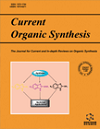
Full text loading...
We use cookies to track usage and preferences.I Understand
Hybrid inorganic/organic nanoparticles are used to make nanocomposites. These nanocomposites combine the different properties of the organic polymer and the inorganic nanoparticles, which improves the overall system properties.
In this research work, Mesoporous Silica Nanoparticle (MSN), amino-functionalized MSNs, and Covalent Organic Frameworks (COFs) were synthesized using a special approach. In this work, in order to take advantage of the properties and characteristics of both porous nanomaterials and porous nanocomposites of COF-grown MSN were synthesized by a special method and with two approaches, and the porosity of the nanocomposites and synthesized nanomaterials was analyzed by BET analysis.
The synthesis of the products was confirmed by XRD, TGA, EDS, FT-IR, FE-SEM, TEM, and Zeta potential analyses. The heavy metals zinc and cadmium were removed using these nanomaterials as an inorganic/organic hybrid adsorbent in the following, and various absorption properties were examined in these nanoabsorbents.
The removal of heavy metals from these hybrid nanoabsorbents is particularly effective.

Article metrics loading...

Full text loading...
References


Data & Media loading...

